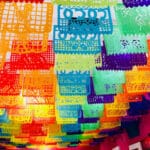Imagine a church adorned with human bones, where every inch of the interior whispers secrets of life and death. That’s the Bone Church of Prague, a hauntingly beautiful ossuary that tells a captivating tale of art, history, and human existence. Dive into the fascinating history of this bone chapel hidden beneath the Cemetery Church of All Saints, and prepare for a journey that will both inspire and leave a lasting impression.
A Church Adorned in Bones
Picture this: a church in Prague. But not just any church. This one, known as the Sedlec Ossuary, is decorated with the bones of somewhere between 40,000 and 70,000 skeletons, arranged into everything from chandeliers to coats of arms.
The Journey Begins
The story begins in 1142 when Miroslav of Markvartic chose this location for a church. In 1278, Abbot Henry of Sedlec brought back soil from Golgotha, believed to be the site of Jesus’s crucifixion. This “holy soil” made the cemetery highly desirable, and burials increased dramatically.
From Overcrowding to Artistry
The Black Death and the Hussite Wars in the 14th and 15th centuries led to mass burials, overwhelming the cemetery. Around the 15th century, a half-blind monk was tasked with organizing the overabundance of bones. His solution? Intricate patterns and designs, transforming the ossuary into a macabre work of art.
The Baroque and Bone Art
In the 18th century, architect Jan Santini Aichel redesigned the chapel in the Baroque style. Then, in 1870, woodcarver František Rint took bone art to a whole new level with his elaborate bone structures: the iconic chandelier, the Schwarzenberg family coat of arms, and countless garlands, chalices, and crosses.
Visiting the Ossuary
Today, the Sedlec Ossuary is a popular tourist destination, drawing visitors from around the world to witness its eerie beauty. Located in Sedlec, a short distance from Prague, it’s easily accessible by train or bus.
Are the Bones in the Bone Church Real?
Yes, the thousands of skeletons in the Sedlec Ossuary are real, representing the remains of those buried in the Sedlec cemetery over centuries. Historical accounts and scientific studies support the claim that these bones, unearthed from the overcrowded cemetery, were artistically arranged within the chapel, first by a half-blind monk in the 15th century and later by woodcarver František Rint in the 19th century.
Rint’s creations, like the bone chandelier and the Schwarzenberg family’s coat of arms, crafted entirely from the skeletal collection, are a testament to the intricate craftsmanship and artistry involved. The Sedlec Ossuary stands as a stark reminder of mortality and the fleeting nature of life while simultaneously showcasing human creativity’s ability to transform the macabre into something strangely beautiful and unforgettable.
Are Ossuaries Catholic?
While ossuaries have a strong connection to Catholicism, particularly during the Middle Ages when they were common throughout Europe, they are not exclusively Catholic. The Catholic Church’s influence on the practice is undeniable, driven by limited burial space in bustling cities and the belief in the resurrection of the body. Ossuaries provided a respectful solution, honoring the dead while making room for new burials, as seen in the Roman catacombs and the Capuchin Crypt in Vienna.
However, various cultures throughout history have utilized ossuaries. The need for space and the desire to honor deceased loved ones are universal. The Sedlec Ossuary, with its artistic bone arrangements, exemplifies how different cultures interpret and utilize these spaces in unique ways.
Which Church in Prague Has Human Bones?
While the “Bone Church,” officially known as the Sedlec Ossuary, is often associated with Prague, it’s actually located in Kutná Hora, about an hour outside the city. This Gothic chapel is renowned for its interior, completely covered in the skeletal remains of approximately 40,000 people.
The ossuary’s origins date back to the 13th century when the abbot of the Sedlec Monastery returned from Jerusalem with “holy soil.” This sacred earth made the monastery’s cemetery a coveted burial site, quickly leading to overcrowding.
Centuries later, a half-blind monk was tasked with exhuming and storing the bones. In the 19th century, woodcarver František Rint transformed the ossuary into its current form, arranging the bones into elaborate designs, including the awe-inspiring bone chandelier.
A visit to the Sedlec Ossuary is more than just a trip to a church; it’s an experience that prompts reflection on life, death, art, and history. The ossuary serves as a powerful reminder of the fleeting nature of life and the enduring power of both art and history.
Want to Learn More?
Do you want to know more about the King of the Neo-Babylonian Empire? Seek further information by reading about Nebuchadrezzar.
And learning about Pizarro’s gold will add more thrill to your curiosity.
Key Points of the Sedlec Ossuary in Prague:
- Adorned with the bones of 40,000-70,000 skeletons arranged in intricate designs.
- Founded in 1142 by Miroslav of Markvartic and became a popular burial site due to soil from Golgotha in 1278.
- Bones were arranged by a half-blind monk in the 15th century, creating artistic designs.
- Reconfigured in the Baroque style by Jan Santini Aichel in the 18th century.
- Woodcarver František Rint crafted elaborate bone structures, including the iconic chandelier and Schwarzenberg family coat of arms (made entirely of bones).
- Currently a popular tourist destination in the Czech Republic, showcasing the intersection of history, art, and the cycle of life and death.

















4 thoughts on “Prague’s Bone Church: A Visitor’s Guide to the Sedlec Ossuary”
Comments are closed.